Exploring innovative solutions in neuromotor assessment, healthcare technology, machine learning, and data-driven applications to improve patient outcomes and enhance rehabilitation strategies.
Motor Imagery Driven Mobile BCI for Motor Training and Neurorehabilitation

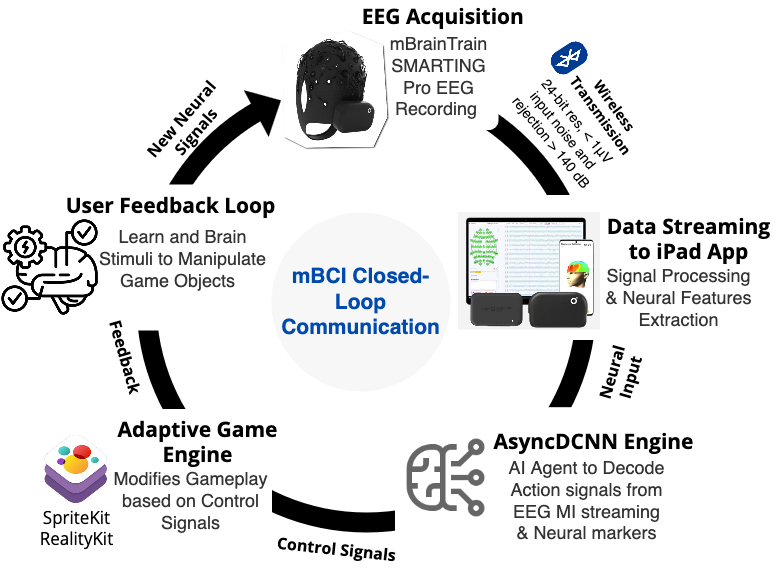
Explore a novel dimension of mobile brain-computer interfacing (mBCI), a neurofeedback-based, adaptively controlled iPad game interface incorporating motor imagery (MI), action observation (AO), and movement execution (ME) of skilled upper limb movements. We introduce a new coherence-based perceptron to build the Asynchronous Deep Coherence Neural Networks (AsyncDCNN), a coherent brain-inspired neuromorphic computing approach. The mBCI design considers a tightly coupled, low-latency closed-loop channel between the mBT wireless wearable EEG headset and the iPad game engine. Our research team aims to pilot the system at the NeuroRecovery Clinic (NRC) at Marquette University, Milwaukee, to evaluate feasibility and usability in individuals with neurological disorders.
mHealth ecosystem (motorlearning.games) to assess motor skills learning and performance and decoding neuromotor control strategies with micro-adaptation using AI
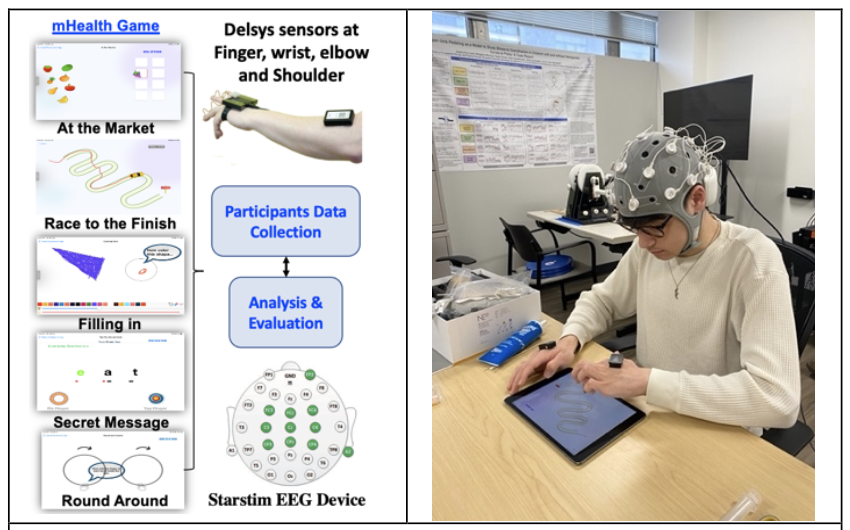
An innovative iPad-based neuromotor assessment system designed for upper-limb movement evaluation in children with cerebral palsy. The experimental protocol integrates iPad games, EEG devices, and muscle IMU sensors for comprehensive motor skill analysis.
- Developed iPad-based neuromotor tests for upper-limb movement assessment
- Integrated VICON 3D motion capture, Starstim tES 20-channels EEG and Delsys IMU sensors for comprehensive data collection
- Deployed data storage, analytics, and management system on AWS
- R03: Conducted feasibility studies with N=72 term and preterm children (ages 5-8), analysis data, applied machine learning techniques for decoding motor skills learning patterns
- R21: Ongoing clinical intervention with N=24 children with hemiparetic cerebral palsy and N=24 age-sex matched TD (ages 6-12), developing automated assessment and analytics pipeline
- Target cohort: Term & preterm born children, Children with Cerebral Palsy, Developmental Disorders, and Typical Developing Children
Gamified mHealth ecosystem to Conduct remote rehabilitation studies
Investigating the integration of gamification elements in mobile health applications to enhance user engagement and therapeutic outcomes. This research focuses on developing evidence-based game mechanics that motivate continued participation in motor skill rehabilitation programs.
SMT-Learner: Movement Trajectory Learning to Decode Motor Control Strategies [In-review ICLR'26]
Spatiotemporal movement trajectory (SMT) representation is essential to understanding the motor skill learning and adaptation strategies that inform neurorehabilitation practices. Movement performance metrics (i.e., speed, accuracy) are insufficient to characterize motor control strategies and learning patterns, particularly in individuals with disordered movement. Motor skill learning patterns require an interpretable sequential SMT representation that preserves spatial, temporal, and performance variables. We present a novel SMT-Learner with transformer autoencoders that optimize performance-aware contrastive and adaptive transfer losses, combining cross-task and cross-subject transfer paradigms. SMT-Learner encodes trajectories into a high-dimensional latent space and enables motor performance-aware learning. We introduce an Exploration-Exploitation (E-E) analytical framework that quantifies motor skill learning and control strategies to balance different movement patterns and micro-adaptation. We tested and validated the SMT-Learner with two visuomotor reaching datasets: (1) a prospectively obtained cohort of term and preterm children's motor learning and performance of unimanual and bimanual tasks, and (2) extensively overtrained non-human primates performing target-directed reaching movements. Our ablation and baseline comparison across geometric, statistical, and clustering metrics demonstrated that SMT-Learner outperformed with the lowest reconstruction error (0.086) and optimized clinical correlation with motor performance variables. Investigated E-E patterns significantly correlated with the early and late stages of motor learning and speed-accuracy trade-offs principles. The SMT-Learner framework provides an efficient computational approach to quantify motor learning strategies; potential advanced downstream applications in developmental assessment, neurorehabilitation monitoring, and movement optimization in robotics or brain-computer interfacing.
- SMT-Learner: Movement Trajectory Learning to Decode Motor Control Strategies. ICLR 2026. (In review).
- Gamified mHealth System for Evaluating Upper Limb Motor Performance in Children: Cross-Sectional Feasibility Study. JMIR Serious Games, 2025.
- Self-Supervised Learning to Quantify Motor Control Strategies... ASNR Annual Meeting 2025 (Abstract & Poster)
- Motor Skill Learning in School-Age Children Tested with a Gamified Mobile Health System. Archives of PM&R, 2025 (Abstract)
- A Scoping Review on Mobile Health Technology for Upper Limb Motor Function in Children with Motor Impairments. Games for Health Journal, 2024.
HIPAAChecker.health - Healthcare Application Security and Privacy Assessment Tools
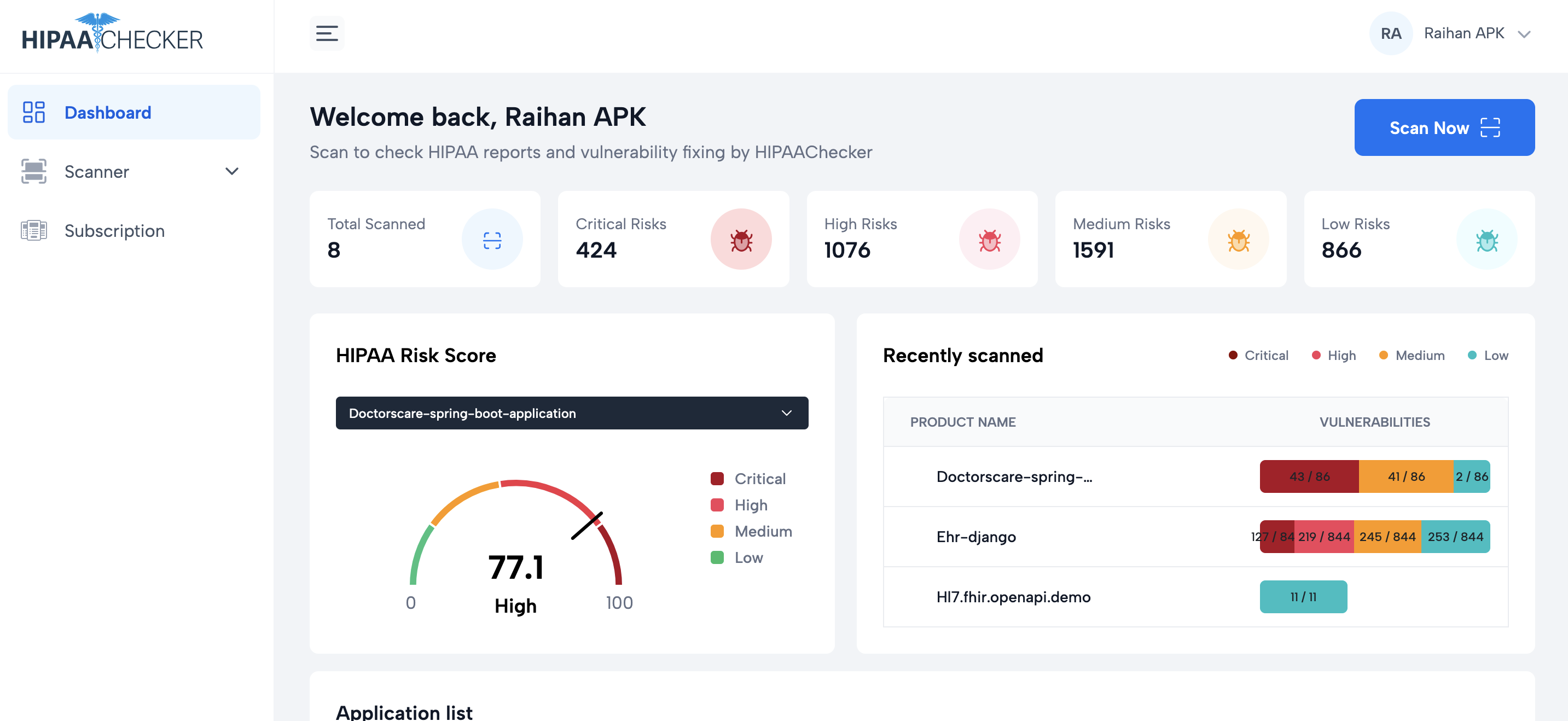
A sophisticated mHealth application security and privacy vulnerability screening platform. This tool performs comprehensive static and dynamic analysis to ensure healthcare mobile applications comply with HIPAA regulations and privacy standards.
- Addresses the gap in healthcare-specific, quantifiable security measures to guide developers and prevent HIPAA violations.
- HIPAA threat model with 272 security patterns across four categories: Insufficient Authorization, Inadequate Data Security, Insecure Network Communication, and Inconsistent Audit Trail.
- Integrates CVSS v4.0 metrics and NIST SP 800-66r2 to quantify a HIPAA Risk Score impacted by implemented security controls.
- New annotated HIPAA benchmark dataset of 78 healthcare applications; evaluated via expert annotation and participatory design (15 testers).
- Statistical validation: significant difference between compliant vs non-compliant apps (p < 0.001); logistic regression AUC = 0.891, optimal threshold 0.575 with 84% accuracy (precision 82%, recall 88%).
- Designed and implemented static and dynamic analysis pipelines for HIPAA compliance screening.
- Developed HIPAAScoring — a HIPAA vulnerability risk scoring model integrating CVSS v4.0 and NIST SP 800-66r2 for quantifiable security assessment.
- Built and deployed a HIPAA LLM API infrastructure on AWS g4dn; integrated with the HIPAACHECKER.HEALTH platform using a fine-tuned 120B open-source model.
- Led a 16-member technical team to design, implement, and productionize security assessment tools.
- Conducted experiments, authored reports/publications, and contributed to NIH STTR grant deliverables.
- HIPAAScoring: Vulnerability Scoring Model for HIPAA Security and Privacy Assessment. USENIX Security 2026. (In review).
- Enhancing HIPAA Compliance in AI-driven mHealth Devices Security and Privacy. IEEE COMPSAC 2024.
- A comparative study on HIPAA technical safeguards assessment of android mHealth applications. Smart Health 2022.
National Clinical Data Warehouse (NCDW) Bangladesh
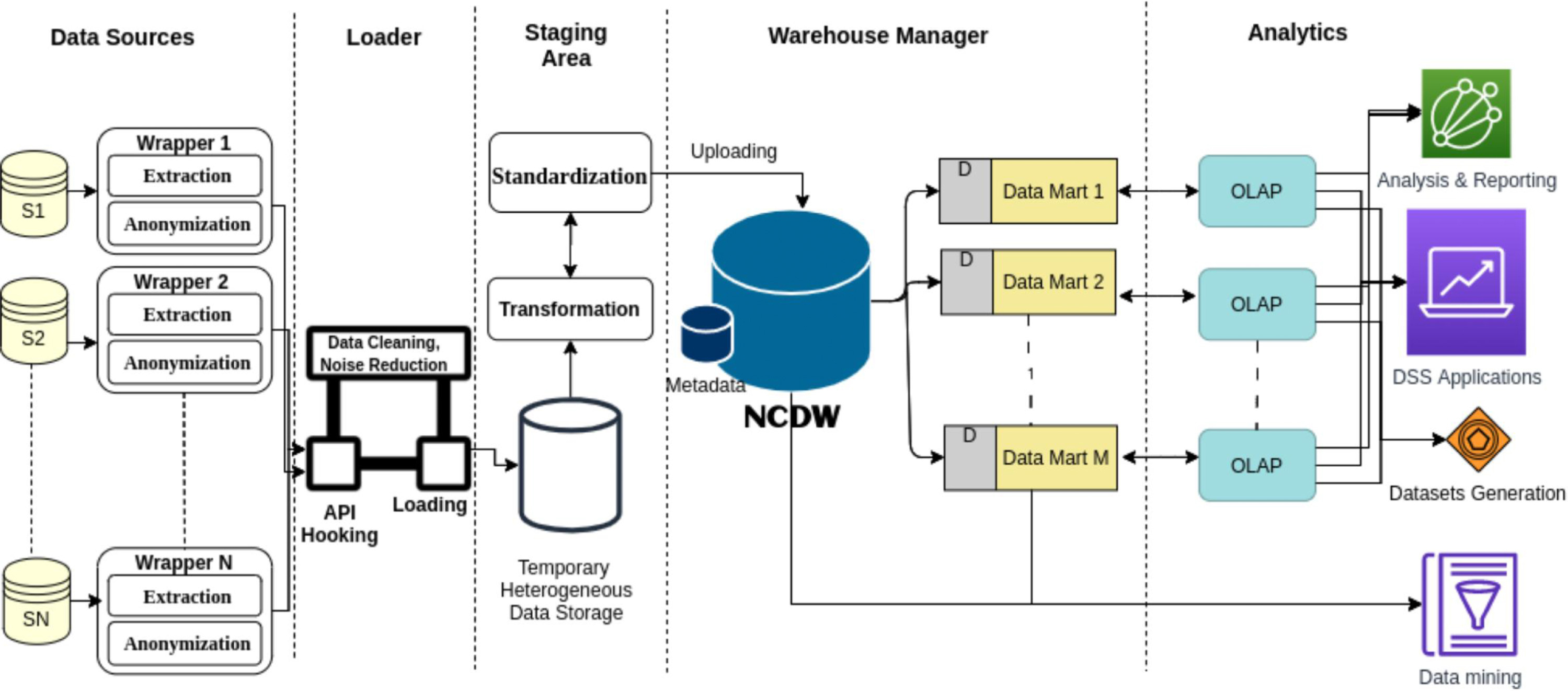
A comprehensive clinical big data research platform designed to handle large-scale healthcare data analytics. The system features advanced data integration, ETL pipelines, and machine learning capabilities for clinical research and decision support.
- Wrapper API-based data integration system
- ETL pipeline and Central Data Repository
- Data marts and OLAP Engine implementation
- Advanced data visualization using Superset
- Machine learning pipeline for model deployment
NBA-Search Analytics
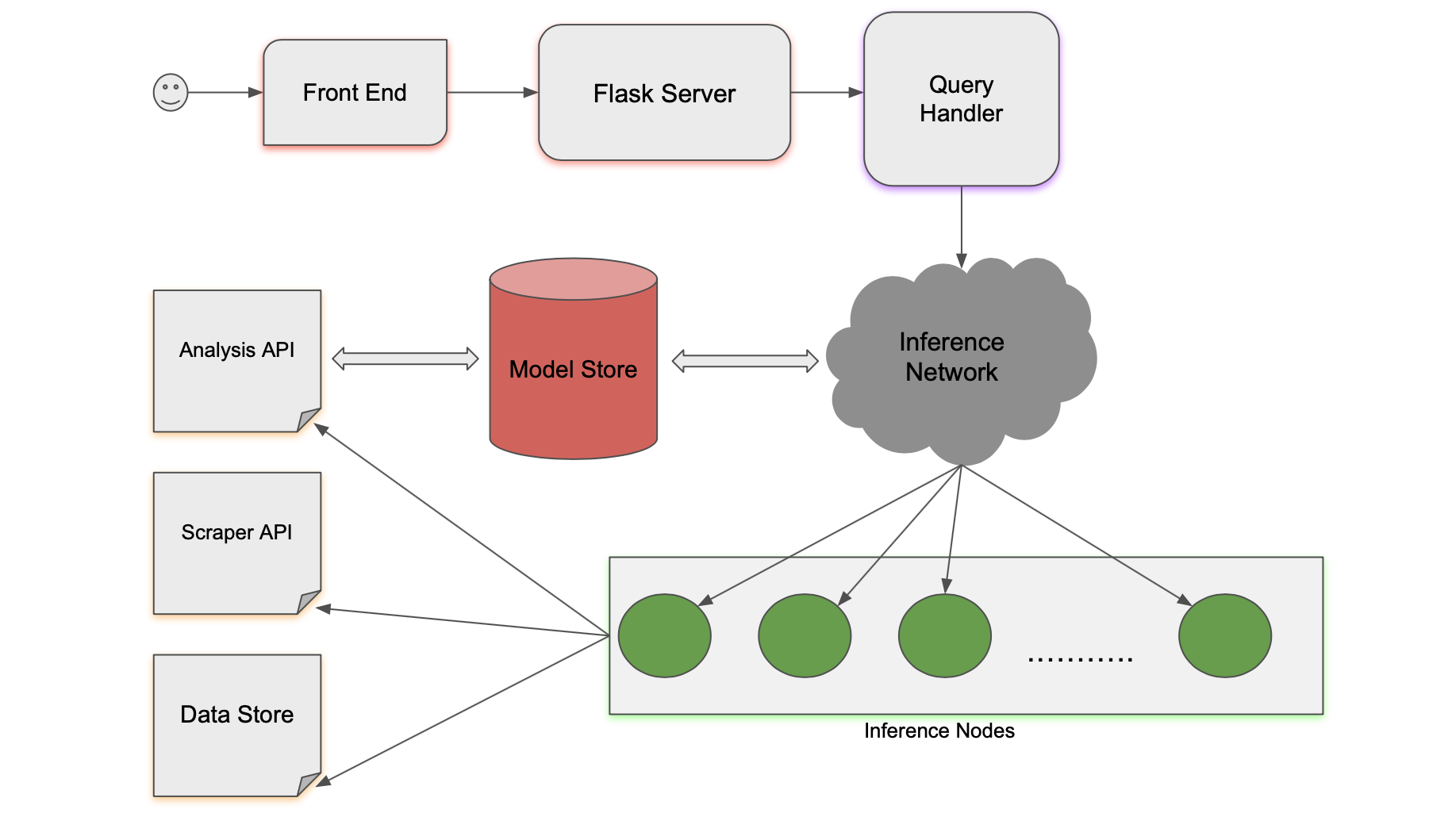
An open-source NBA analytics platform providing comprehensive basketball statistics and player analysis. I contributed to the implementation of advanced clustering algorithms and machine learning techniques for player performance evaluation and team analytics.
- Implemented clustering algorithms (KNN, K-Means)
- Developed player similarity analysis features
- Created advanced statistical comparison tools
- Contributed to open-source basketball analytics community
vInternship.org - Supporting Blended Learning Environment Connecting Interns, Universities and Industries
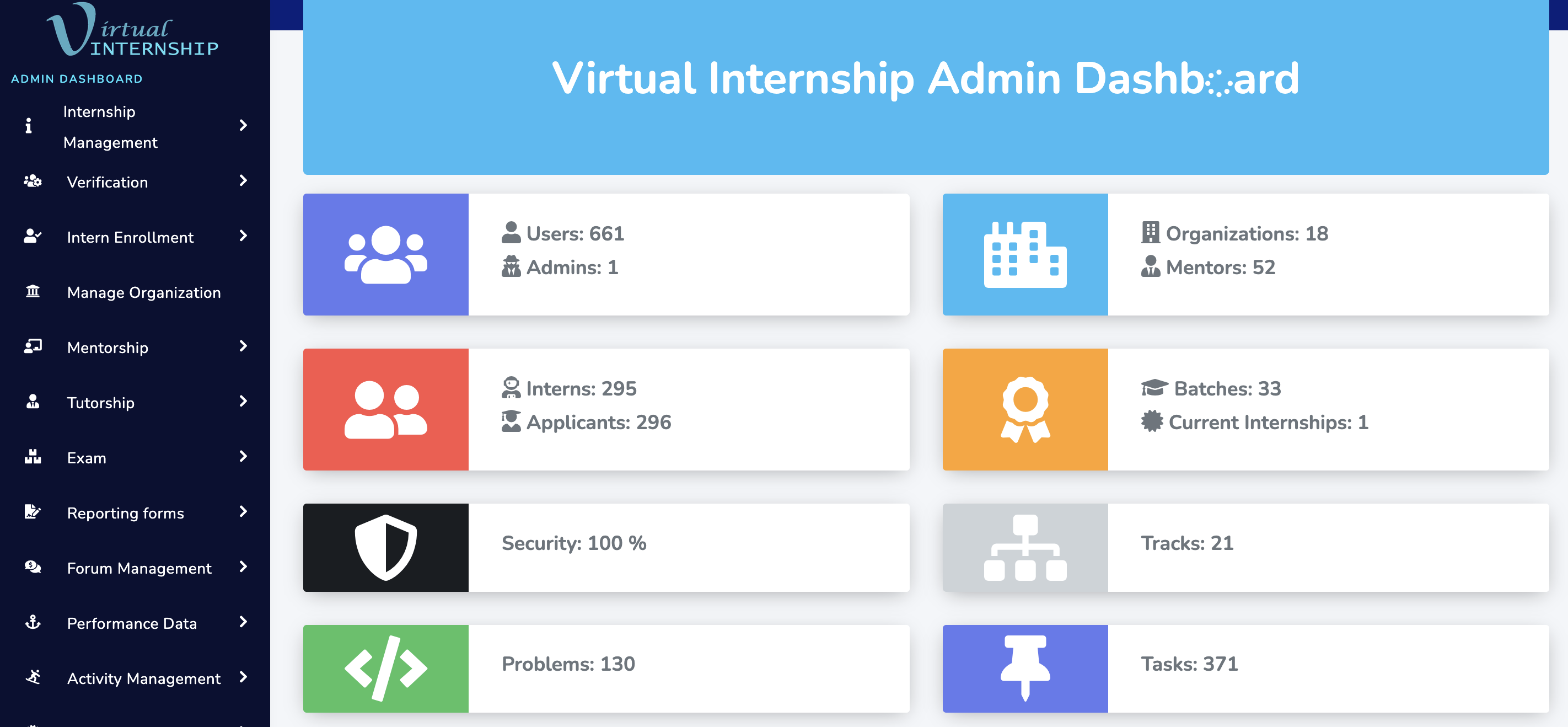
A revolutionary virtual internship platform designed to seamlessly connect industry professionals, universities, and interns. The platform facilitates remote collaboration, skill development, and professional networking in a virtual environment.
- Designed platform architecture and virtual internship protocols
- Led and mentored a team of five developers
- Conducted comprehensive research and optimization studies
- Implemented industry-university collaboration frameworks
Robotic Process Automation (RPA) to Automate Banking Operations
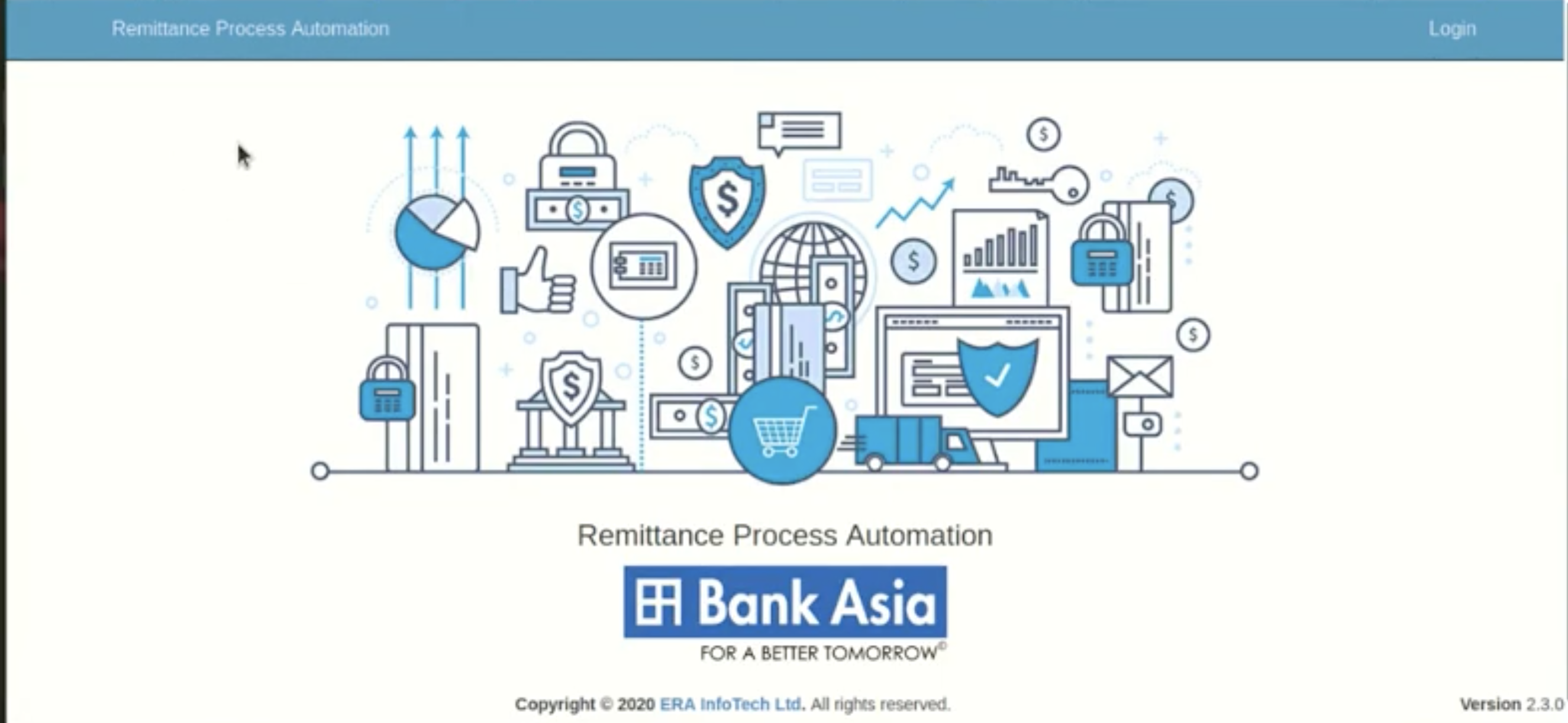
A comprehensive Robotic Process Automation system developed for Bank Asia Ltd. The solution automates repetitive banking processes, improves operational efficiency, and reduces manual errors through intelligent automation workflows.
- Designed automation system for Bank Asia Ltd operations
- Implemented client requirements using Agile Scrum methodology
- Developed clean, robust, and reusable automation modules
- Significantly reduced manual processing time and errors
Digital Document Archive System for Planning Commission of Bangladesh Government
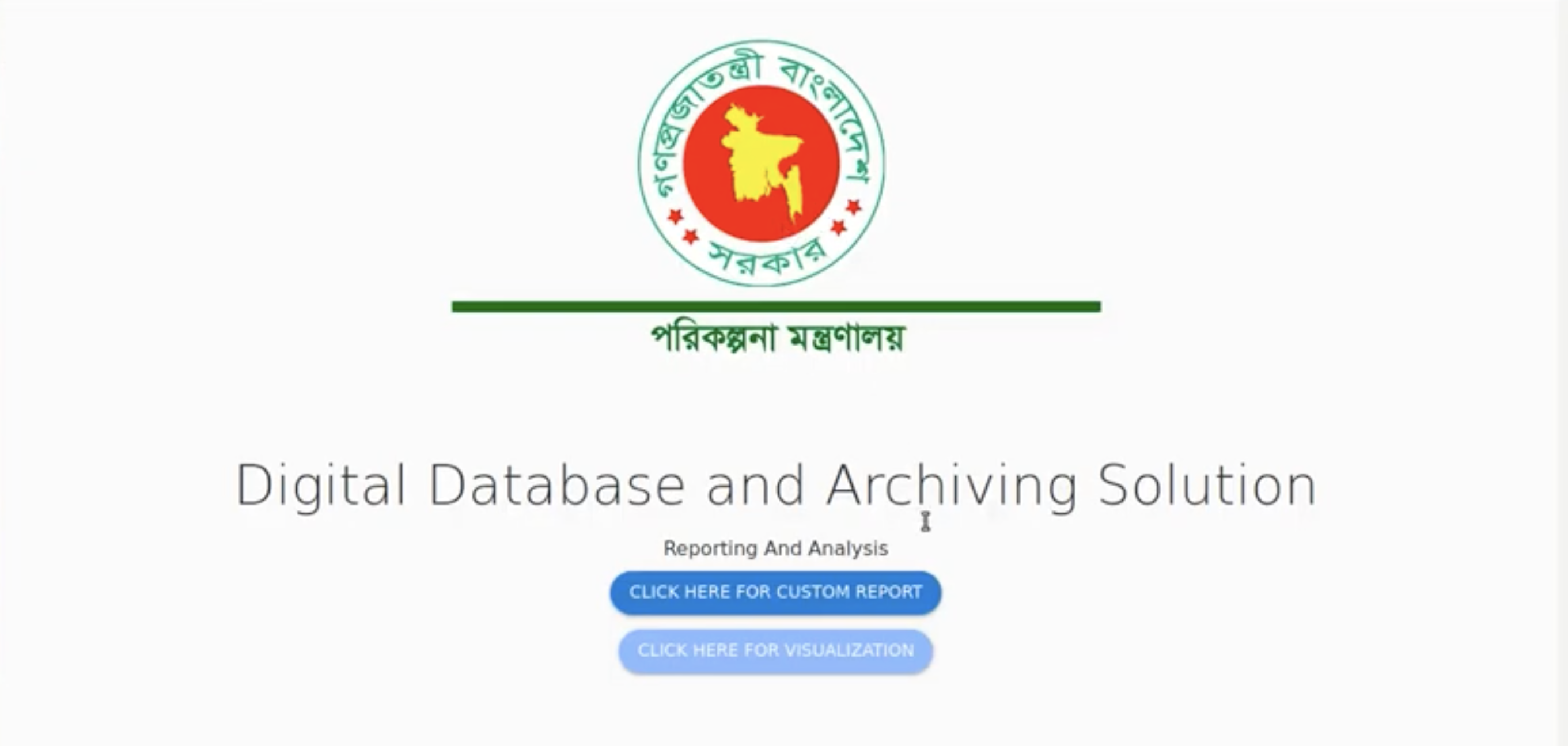
A government-level digital archival system developed for the Planning Commission of Bangladesh. This comprehensive solution digitizes, processes, and manages historical documents with advanced OCR capabilities for Bengali text recognition.
- Designed and developed comprehensive ETL pipeline
- Conducted R&D for Bengali Optical Character Recognition
- Collaborated with cross-functional development teams
- Implemented document digitization and archival workflows